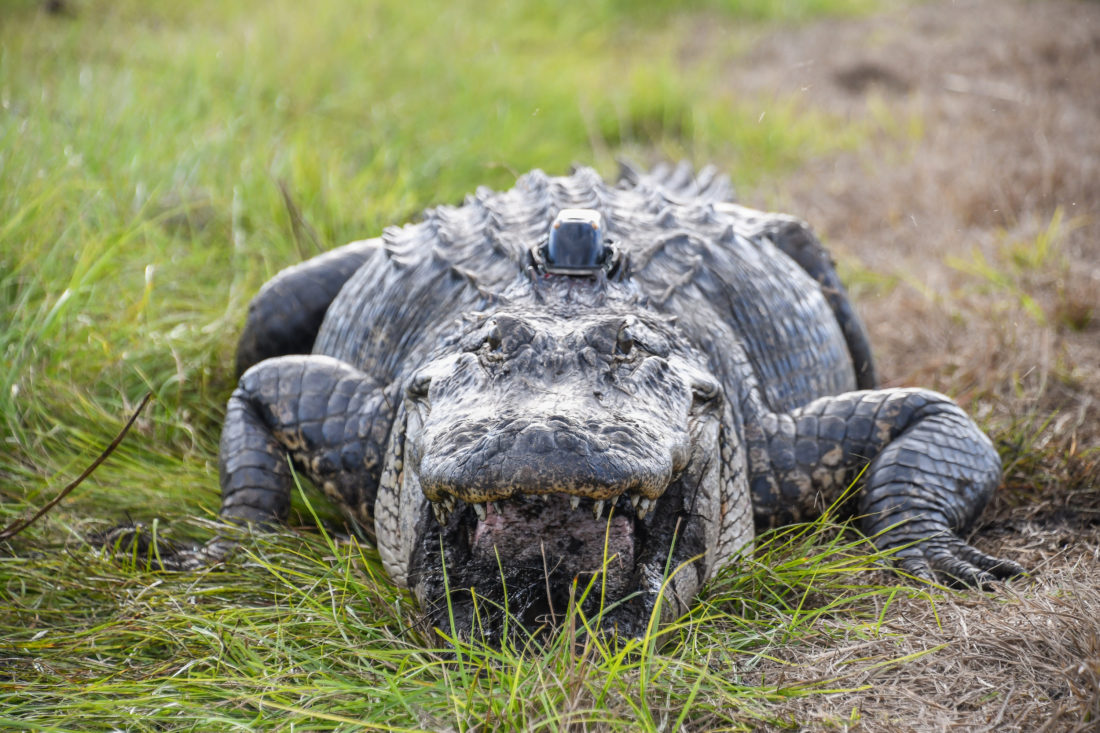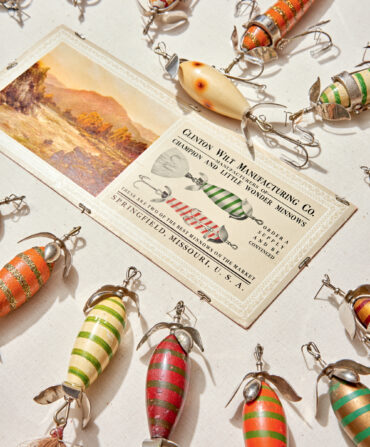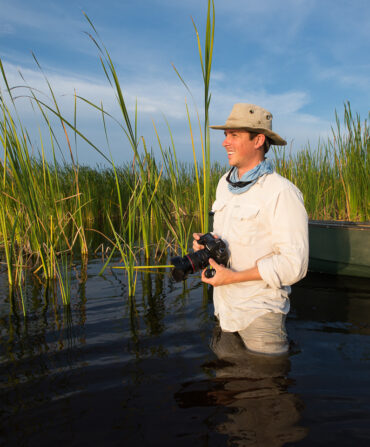Seeing a gator isn’t an unusual occurrence in South Carolina. The state’s wildlife management areas and abundant waterways are home to roughly 100,000 American alligators. But few people have spotted one dressed up for a ball.
As part of a new long-term study to learn more about alligators’ movements in the state, researchers at the South Carolina Department of Natural Resources and Clemson University have teamed up to tag a dozen adult alligators every two years with tracking devices. After turning loose the first tracker-sporting reptiles this winter, they didn’t necessarily expect they’d start getting some calls about gators in top hats.
The little black “hat,” actually a GPS device placed just behind the head, can send a signal when a gator is on land or when it surfaces in the water, hence the tracker’s location. The study will help scientists better understand how large adult alligators naturally use their environments along waterways in the protected Wildlife Management Areas on Bear Island and in the Santee Coastal Reserve. Though they might not be everyone’s favorite reptile, alligators play a vital role in their ecosystems. Known as habitat engineers, gators drag themselves up on banks, dig dens, and move dirt around to make ponds and waterways suit them. This in turn creates habitat that a variety of other species use, from fish and crabs to other reptiles and even mammals.
Morgan Hart, SCDNR’s lead alligator biologist, is a regular on the four-to-six-person tagging teams. Once the team catches a gator using a non-barbed hook and rod, they tape the mouth closed, restrain the legs, and a lucky volunteer sits on top to help hold it down. Hart says it’s an experience like no other. “The animal is often so large that as it breathes, your knees are lifted off the ground,” she explains. “If their feet weren’t restrained, they could just walk back into the water with you sitting on them.”

The team numbs the gator’s neck with lidocaine and affixes the tracker in place using a stainless steel wire. Otherwise, the gators would likely lose the devices; both males and females clash over territories, and the fights can get rough. With the tracker secure, each gator will wear its device for about two years before the battery finally runs out.
Despite the inherent risk of interacting frequently with a 500-pound reptile with 80 sharp teeth, Hart loves getting up close to this ancient species. “It’s like working with a modern dinosaur or putting your hands on a dragon,” she says. And she’s glad the study has drawn some notice—it’s not often gators get much positive attention. Then again, it’s not often they wear top hats, either.








